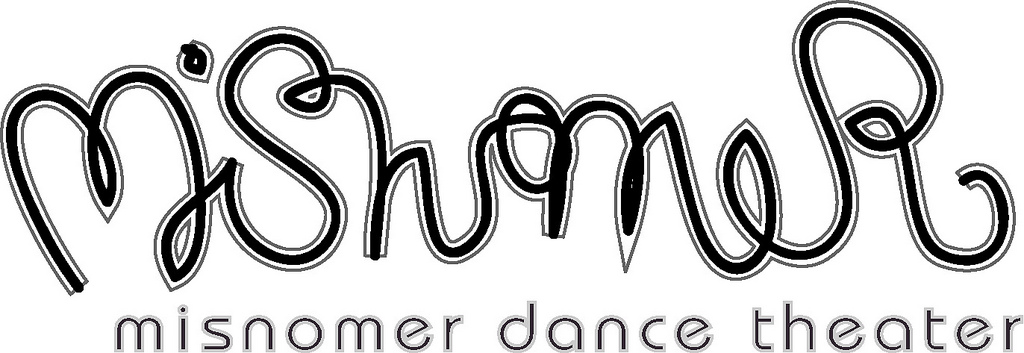DANCE; The Dark and the Light, The Passionate, And the Daring
By JOHN ROCKWELL
ARTICLE EXCERPT:
“6. Chris Elam is a strange one, a seemingly quirky man who makes quirky dances. But they are compellingly quirky, and the program he presented in May at Performance Space 122, ”Throw People,” was terrific. Too much modern dance today implies theatricality but remains so abstract and disconnected that the meaning is hard to discern. Mr. Elam is hardly explicit, but his imagery cuts to the quick.”
FULL ARTICLE:
MY several journeys outside the New York metropolitan area this year could only touch on all the exciting dance going on around the country and the world. So I’ll confine the events — chronologically ordered — that particularly moved and impressed me to New York, still a hyperactive, hypercreative dance town with ample candidates for any 10 Best list.
1. Jeremy Wade has a gift. But how can he top ”Glory,” a mostly nude, overtly erotic duet with Jessica Hill at Dance Theater Workshop in February. More nudity? More sex? More danger? More dance? Whatever he does should be exciting to see.
2. Soledad Barrio purges flamenco of its latter-day theatrical trappings, evoking the grit, mystery and passion of a Gypsy encampment. Her performance in the New York Flamenco Festival at City Center in February was riveting.
3. Stan Won’t Dance, a spinoff of the pioneering DV8 Physical Theater in London, offered the year’s best incarnation of British physical theater, ”Sinner,” at Performance Space 122 in March. The tension between two men — one a sexual dominator, the other seemingly passive but about to explode a nail bomb in the London bar where they meet — was truly a theatrical experience, with a pungent spoken text. It was also ingeniously choreographed and brilliantly danced.
4. The Finnish Tero Saarinen’s terrifying version of ”Le Sacre du Printemps,” in which the protagonist becomes the hunted, was impressive enough at the Joyce Theater in March. But his ”Borrowed Light” at Jacob’s Pillow in July was even better: an exalted distillation of Shaker beliefs and community.
5. The Diamond Project, New York City Ballet’s often critically disparaged series of newly commissioned ballets, seen last spring at the New York State Theater, had its usual ups and downs. But there were three ups, each memorable in its way. ”In Vento” of Mauro Bigonzetti, in May, was a theatricalized depiction of a tortured loner and a femme fatale, superbly incarnated at the premiere by Benjamin Millepied and Maria Kowroski, one of several showcases for Ms. Kowroski this year. Jorma Elo’s ”Slice to Sharp,” in June, was a perhaps shallow but spectacularly physical piece of nonstop virtuosity for some of the company’s many fine dancers. And Alexei Ratmansky’s ”Russian Seasons,” also in June, blended contemporary ballet and Mr. Ratmansky’s roots to poetic effect.
6. Chris Elam is a strange one, a seemingly quirky man who makes quirky dances. But they are compellingly quirky, and the program he presented in May at Performance Space 122, ”Throw People,” was terrific. Too much modern dance today implies theatricality but remains so abstract and disconnected that the meaning is hard to discern. Mr. Elam is hardly explicit, but his imagery cuts to the quick.
7. American Ballet Theater’s two seasons — at the Metropolitan Opera House in the late spring and early summer, and at City Center in the fall — offered the usual quotient of fine dancing and alternately hoary and lively choreography. For me the single most exciting moment came at the season-opening gala in May: in an excerpt from Kenneth MacMillan’s ”Manon,” Diana Vishneva, as the wayward courtesan, was passed sensuously yet degradingly from man to anonymous man.
8. Yvonne Rainer seems to be making a welcome return to choreography after years of devoting herself to experimental film. But her most striking achievement this year came in a third form, literature, with her fascinating memoir of her earlier dance years, ”Feelings Are Facts.” Personality and artistry are never far apart with Ms. Rainer, and both receive full attention here.
9. Mark Morris had an even busier year than usual, with his company’s 25th-anniversary season in Brooklyn in the spring, a dance for the Boston Ballet in March, the New York premiere of his up-and-down version of ”Sylvia” at the Lincoln Center Festival in July and the return of ”The Hard Nut” at Bard College this month. But there were two clear highlights: ”Mozart Dances,” a Mostly Mozart Festival commission at the New York State Theater in August, and — to violate my self-imposed geographical strictures — his dance version of Purcell’s ”King Arthur,” which I caught up with in Berkeley, Calif., in October and which will come to the New York City Opera in 2008. The Mozart was delicious musical abstraction, full of Mr. Morris’s warm humanism; ”King Arthur” was a loony, delightful farce.
10. Bill T. Jones presented his ”Blind Date,” first seen in 2005, in July at the Lincoln Center Festival. But his winner was ”Chapel/Chapter,” which had its premiere this month at the Gatehouse in Harlem. An impassioned, compassionate meditation on murder and justice, Mr. Jones’s new dance made an enormous moral impression, in large part through its very sublimation of politics into art.










